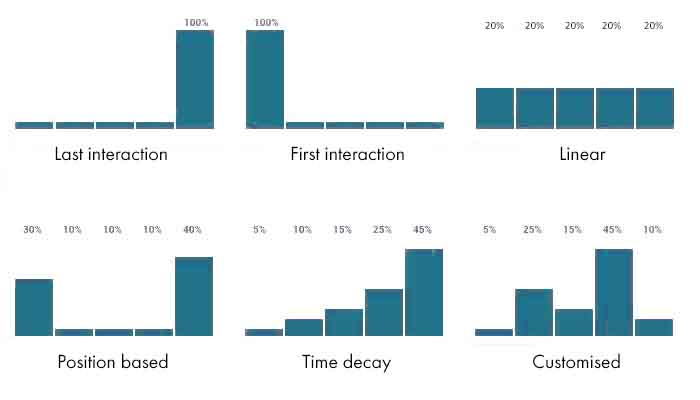From SEO to content, every marketing spend has to be justified. That said, it’s easier to prove the effectiveness of some forms of marketing more than others. Take PPC for example – you can physically see how much revenue you’ve made in comparison to how much you’ve spent. With content marketing ROI though, it’s a little more complicated.
Almost two-thirds of marketers (57 per cent) expected to spend more on content marketing in 2019 than the previous year, according to the latest B2C Content Marketing report from Content Marketing Institute. The pressure to prove to your boss that content marketing is worth the investment is higher than ever, so this article takes a look at the some different ways you can measure your strategy. But first…
What are you measuring?
Return on investment (ROI) doesn’t have to mean cold hard cash; it can be anything your business wants to achieve, such as more leads, increased brand awareness/engagement, press coverage, organic traffic, or something else entirely – as long as you can attribute it to revenue or calculated value.
Don’t expect results straight away
Just like with PPC, it may take some time and patience before you start seeing real results from your content marketing efforts. Take a look at the example below: this blog has received more than 3,000 page views since it was published in early 2017, but it’s taken a while to build up the numbers.
Source https://pixelunion.net/
After an initial flutter from promoting the post on social, you can see page views gradually increased throughout 2017 and 2018. After updating the article to make it more relevant for 2019 and promoting it again across various channels, you can see a significant jump in page views at the start of the year.
This is a good illustration of how content marketing can generate ongoing, improved results over time.
7 ways to measure the ROI of your content marketing strategy
Content marketing powers all of your inbound strategies, which means success can be measured in several ways. Before you can measure the ROI of any marketing strategy, you need to know which metrics and KPIs point to success.
Here are seven common ways to measure the ROI of your content marketing strategy.
- Revenue: Attributing sales and revenue to your content marketing strategy.
- Leads
- Conversions: Any valuable action completed on your website (purchase, email enquiry, phone call, account creation, email signup, etc.)
- Organic traffic
- Search ranking
- Social engagement: Both organic and paid social results rely on the quality of your content and provide valuable analytics for measuring ROI.
- Cost-per-acquisition (CPA): How much it costs you, on average, to capture a lead and turn them into a paying customer.
Some of those KPIs and metrics will give you a more reliable picture of your content marketing than others (eg: revenue and CPA) but they’re also more difficult to calculate accurately.
Essentially, it all comes down to attribution and being able to attribute sales to specific content marketing campaigns and metrics like traffic volume to increased revenue.
#1: Revenue
Revenue is the most important KPI for calculating the ROI of any marketing strategy. The basic formula for calculating return on investment is as follows:
ROI = ((Return – Investment) / Investment) x 100
Tracking how much you invest in content marketing is simple enough but knowing how much revenue is attributable to that investment (return) is more challenging. First up, you need to attribute sales to content marketing campaigns but, ideally, you also want to attribute other revenue drivers, such as repeat purchases, customer lifetime value, total purchase value and profit.
It’s relatively easy to attribute sales and other revenue drivers to the final piece of content customer view before buying but this doesn’t help you calculate the value of the content they engaged with during the earlier stages of the consumer journey.
This is why it’s important to avoid the last-click attribution model and we’ll explain more about this a little later.
#2: Leads
Another way to measure the value of your content marketing campaigns prior to the purchase is to track how many leads they capture. Depending on the type of campaign you’re running and which stage of the consumer journey you’re targeting, leads can vary from someone clicking through to your website from search or social to someone picking up the phone to ask for a quote.
Some leads are more valuable than others and, once again, attribution is crucial.
This time, though, there are two key things you need to attribute leads to: the content that captured them and any future sale they lead to – the latter of which is vitally important.
If you know that 10% of leads from campaign X are going on to buy your most expensive product, you can calculate a reliable ROI. More importantly, you can optimise this campaign to increase lead volume or the percentage of leads that go on to make the purchase.
You can track leads in Google Analytics by using Event Measurement, which allows you to measure interactions like CTA button clicks, video-play clicks and form interaction. You can find out more information in our handy guide to tracking leads in Google Analytics.
#3: Conversions
With Event Measurement set up in Google Analytics, you can now create and track goals for highly-specific actions. This allows you to measure just about any conversion type on your website and optimise them to increase conversion rates.
So now you’re able to attribute conversions to the last piece of content prospects engage with before taking action. As we said, earlier, though, this doesn’t help you calculate the value of the content they’ve previously engaged with and wouldn’t have made it to this stage without.
By default, Google Analytics uses the Last Click Attribution model, which only attributes the final page/source prior to the conversion. By switching to alternative attribution models, you can assign value to the first interaction, equal value to all interactions (linear) or based on recency (time decay).
For a more detailed look at attribution models, take a look at our marketing attribution models explain article. Once you’re done with that, you can also find out why we use our own data-driven attribution (DDA) model to accurately calculate the value of campaigns.
#4: Organic traffic
Traffic is the most obvious KPI of any content marketing campaign and also one of the easiest to measure. If you want quick feedback on the success of a piece of content, page views is a good metric to monitor over time – just like we did earlier.
If 5% of page views results in a purchase, you’re looking at 5,000 sales per 100,000 page visits. This gives you a benchmark for optimising to increase organic traffic so that instead of generating 100,000 page views over the course of a year, you’re hitting 150,000 and an extra +2,500 sales over the same time period.
There are variables to consider, though. Not all page views are equally valuable and, likewise, certain purchases generate more profit than others. By increasing the quality of page views and optimizing for the most profitable sales, you can increase your ROI by attracting the right kind of visitors rather than simply focusing on simply maximizing traffic volume.
Agin, it all comes down to how accurately you attribute visits to sales and other KPIs.
#5: Search ranking
As your content marketing campaign matures, your ranking for specific keywords should improve on Google and other search engines. Higher rankings should result in more visitors and opportunities to increase ROI. With a strategy like SEO, most of the investment lies in the creating and optimization of content and the results should generally improve over time.
As your ranking improves, you should see higher returns from your content with minimal or no further investment. This is why SEO remains such a key strategy for digital brands: because the long-term ROI is unrivaled by other strategies, even if results aren’t instantaneous.
#6: Social engagement
Organic search isn’t the only place your content generates valuable traffic from and search rankings aren’t the only measure of content quality. Assuming you’ve got the audience to begin with, great content should get plenty of engagement on social media, bringing in likes, views, shares, new followers and page visits.
Social engagement should lead to more eyes on your content and, ultimately, more traffic clicking through to your website. You can use custom URLs to track which campaigns and posts are generating the most traffic and then attribute these visits to conversions and revenue.
Organic reach is becoming increasingly small on most major networks so you’ll often find the best engagement comes from paid social media campaigns. The good news is, this gives you a wealth of targeting options to pinpoint relevant audiences, resulting in more page visits and valuable conversions.
Paid social campaigns also give you a deeper set of data to work with, allowing you to attribute social engagement to revenue and other KPIs more accurately.
#7: Cost-per-acquisition
Cost-per-acquisition (CPA) is a metric that should always closely follow ROI in your marketing reports. This tells you how much you’re spending (on average) on content marketing to secure each new customer and it’s a key component of accurately calculating and optimizing your ROI.
Generally speaking, there are two ways to increase your return on investment in content marketing. Either you generate more revenue without increasing spend or you reduce spend without reducing revenue.
Cost-per-acquisition provides a measurement of your content marketing investment, relative to the capturing of a new customer. By reducing CPA and monitoring sales volumes, you can increase ROI by reducing spend while ensuring sales don’t suffer as a result of your more efficient content marketing strategy.
Conversely, you can increase investment while using CPA and sales volumes to ensure that you’re getting the increased return you expect.
Read more: How to Justify the Cost of Content Marketing


